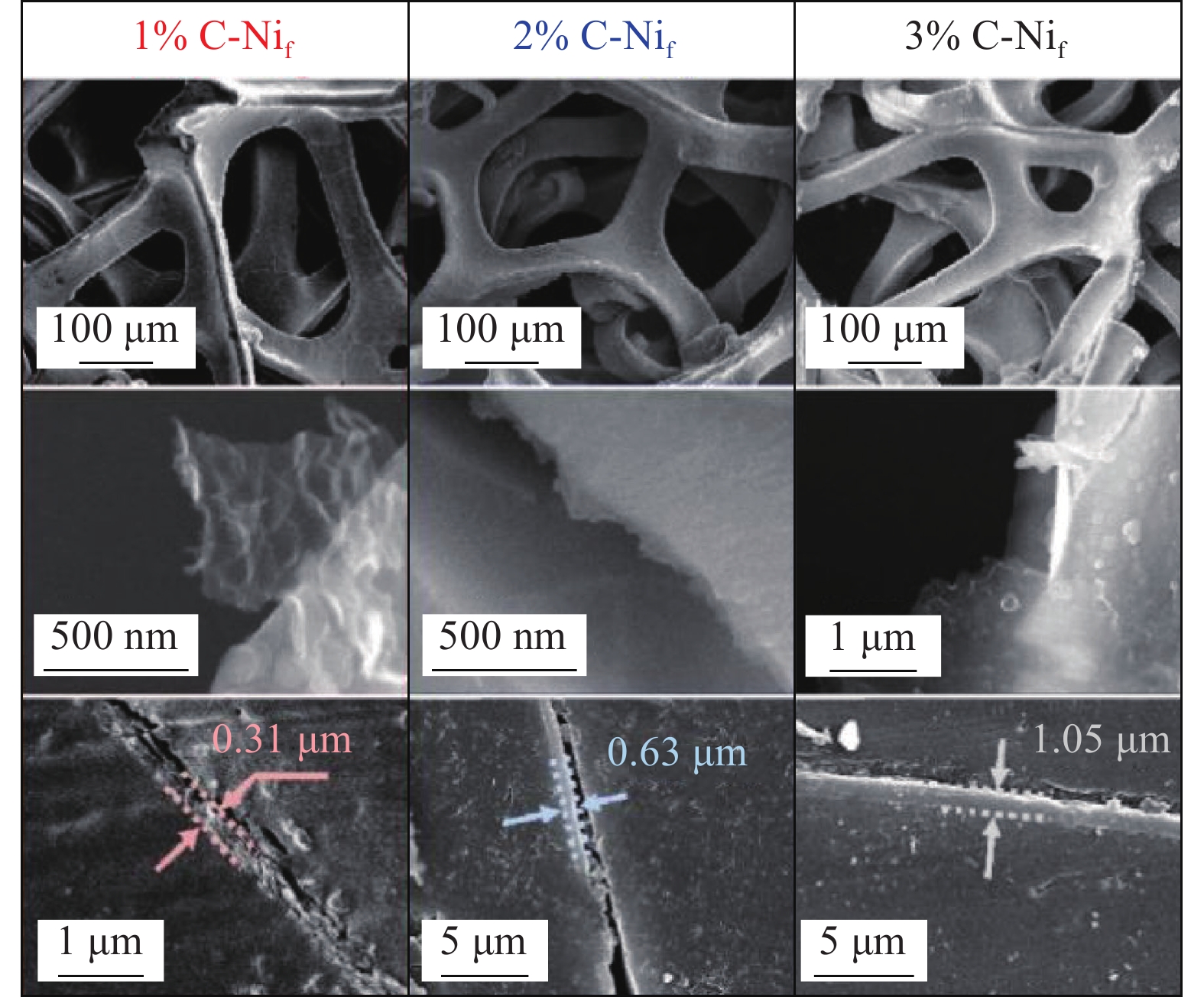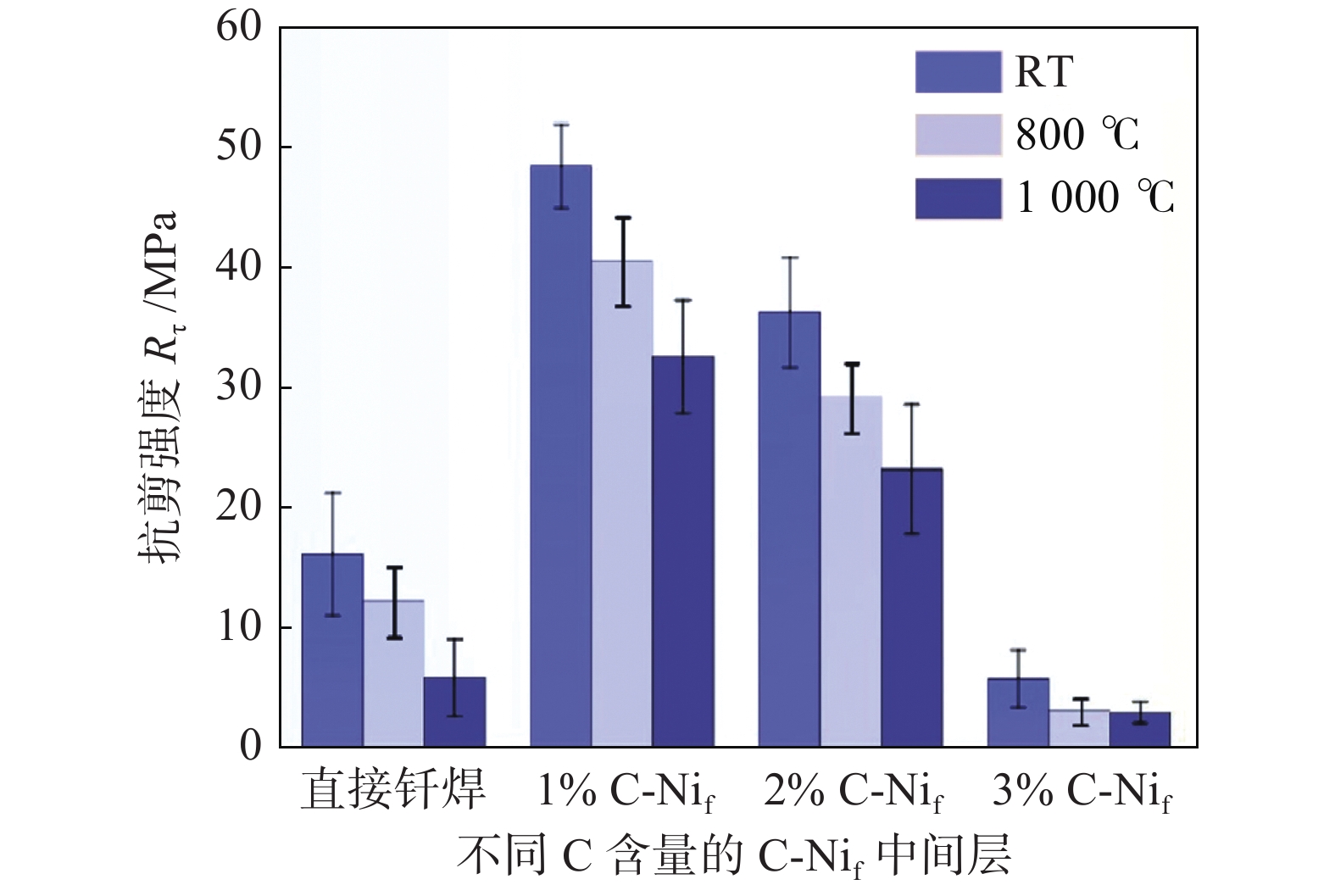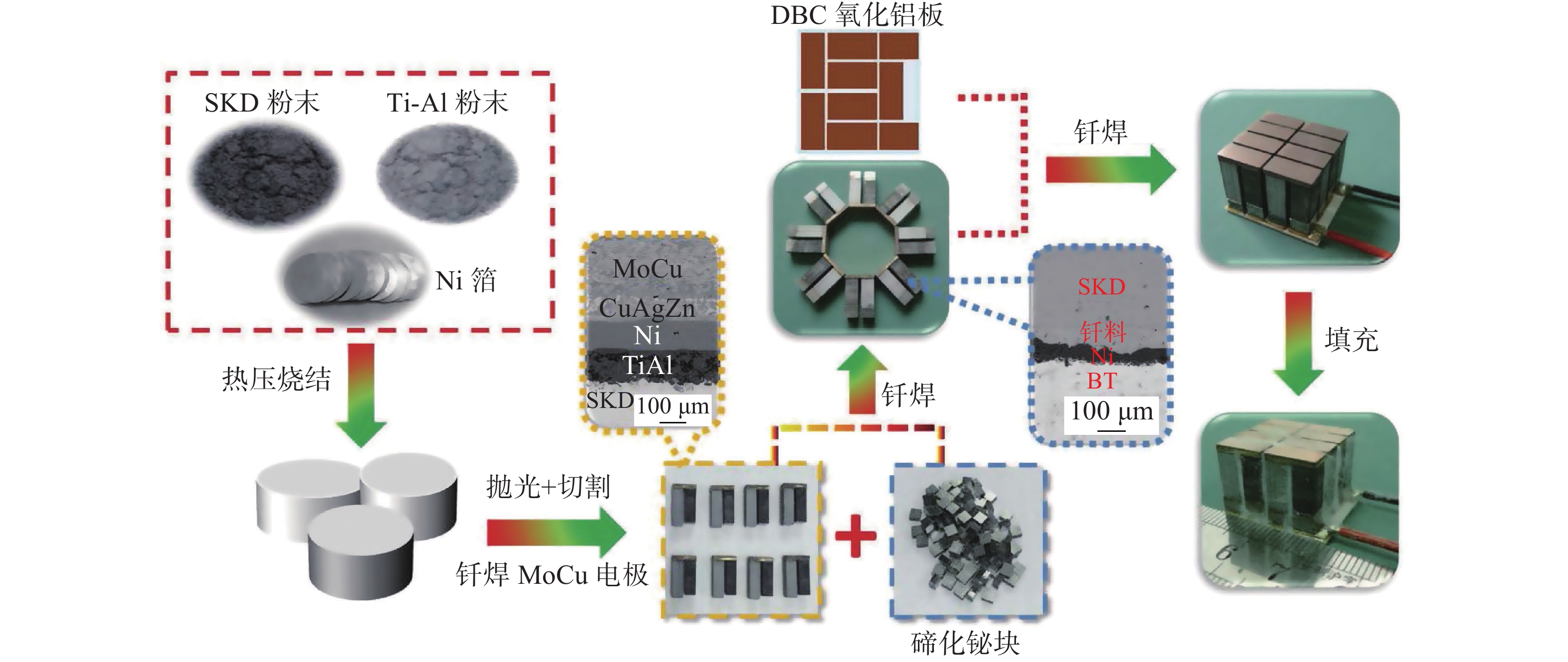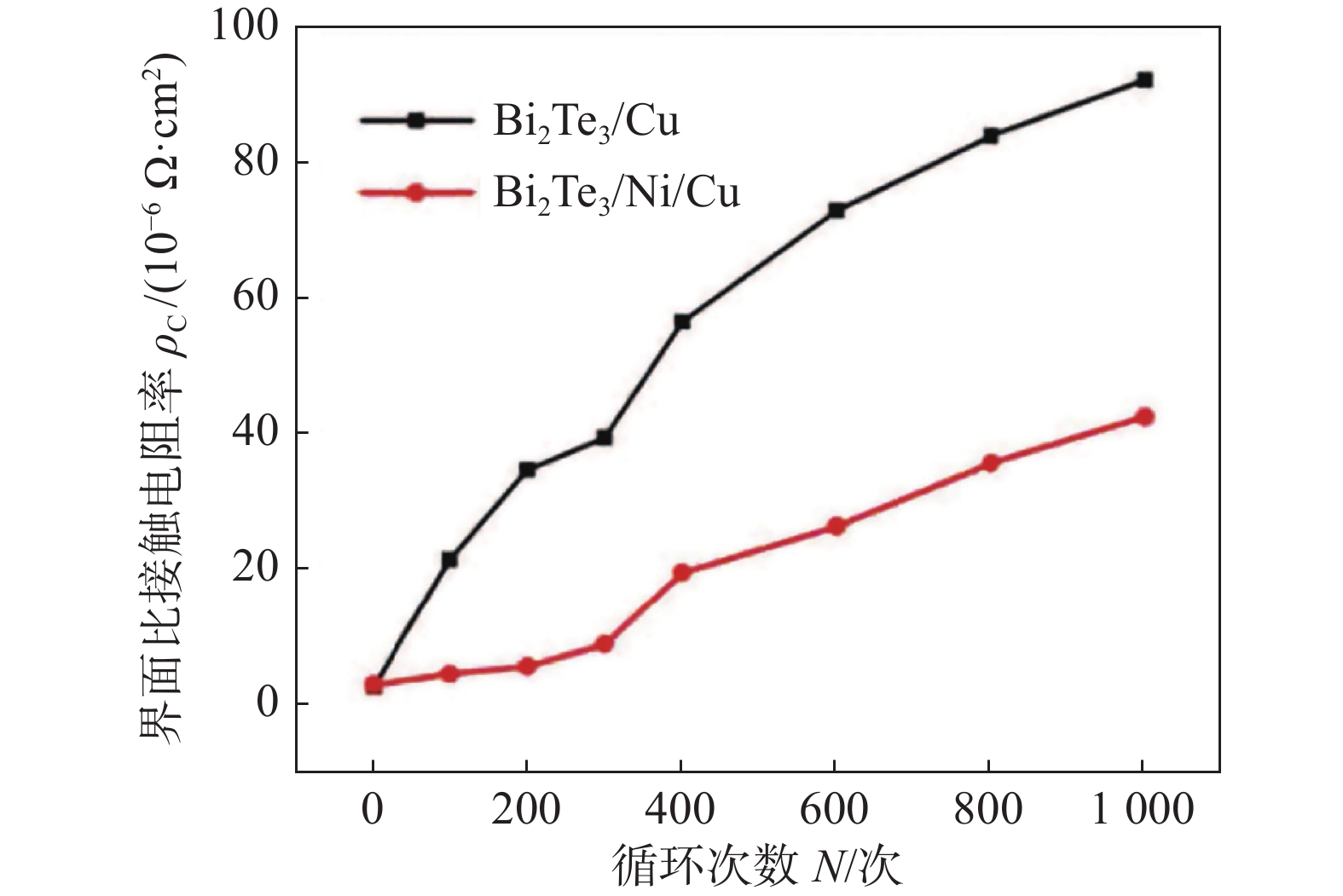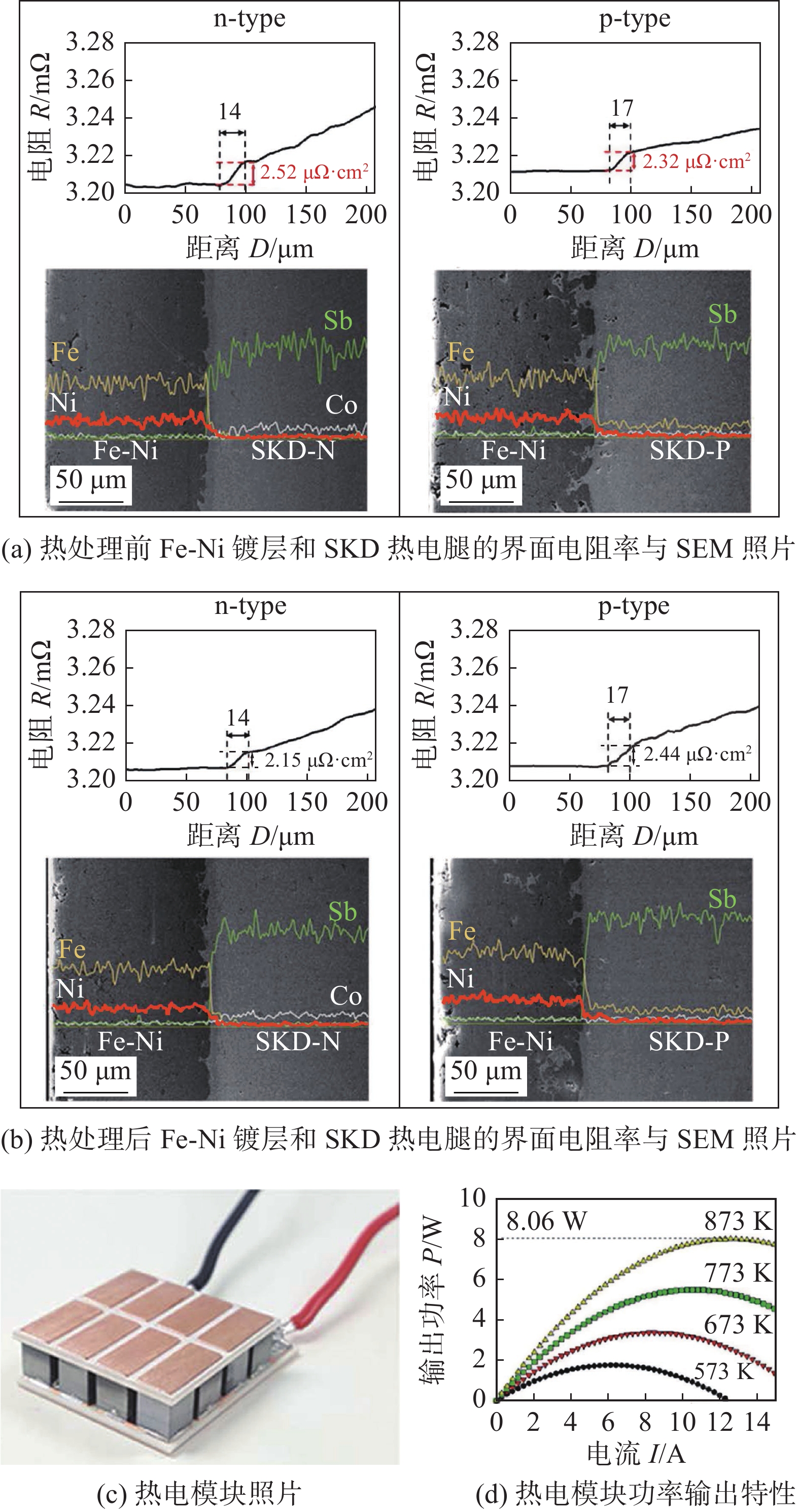Research progress on brazing of advanced functional materials
-
摘要: 以复相陶瓷、纤维增强陶瓷基复合材料以及热电材料为例,从钎料成分设计、钎缝界面组织调控、接头残余应力缓解以及钎焊接头性能评测等角度,讨论了近年来发表的研究成果. 结果表明,在钎料中添加活性元素以及对母材表面改性的方法,能够有效改善钎料润湿性和界面结合强度;对于界面元素扩散以及母材过渡溶解的问题,可以设计制备复合钎料或阻隔层进行解决;接头残余应力的大小受材料热膨胀系数差异的影响较大,目前已提出了多孔中间层、梯度复合层以及母材表面机械加工等多种创新方法,但研究成果的应用仍停留在小尺寸样件,对于缓解大尺寸接头的残余应力问题仍有待解决. 最后对相关研究方向进行了总结和展望,期望推动航空航天构件连接的发展进程.
-
关键词:
- 复相陶瓷 /
- 纤维增强陶瓷基复合材料 /
- 热电材料 /
- 钎焊
Abstract: Taking multiphase ceramics, fiber reinforced ceramic matrix composites and thermoelectric materials as examples, this paper discusses the researches published in recent years which focused on the composition design of filler metals, microstructure controlling of brazed interface, residual stress mitigation of brazed joints and performance evaluation of brazed joints. The results show that the wettability and interfacial bonding strength can be improved effectively by adding active elements to filler metals or modifying the surface of base metal. For the element diffusion of interface and the transitional dissolution of base metal, composite filler metals or barrier layer can be designed and prepared to solve these problems. The residual stress of brazed joint is greatly affected by the difference of thermal expansion coefficient of brazing materials. At present, various novel solutions have been proposed, such as adding porous interlayer, preparing gradient composite layer and machining of base metal surface. However, the application of research results is still limited to small size samples. The problem of relieving the residual stress of large size joints remains to be solved. Ultimately, the prospect of the interest in future research is concluded. It is expected to promote the domestic manufacturing of aerospace and weapons equipment. -
0. 序言
为进一步满足国家重大战略与基础科学研究需求,中国科学院高能物理研究所将在北京市怀柔区建设一台高性能的第四代同步辐射光源—高能同步辐射光源(high energy photon source, HEPS).
HEPS是《国家重大科技基础设施建设“十三五”规划》优先布局的十个重大科技基础设施之一,并已于2017年底获得国家发展改革委对HEPS项目建议书的批复,HEPS正式立项。高能同步辐射光源的设计指标超过了目前世界上正在运行和建造的同步辐射装置,HEPS建成后将成为世界上发射度最低、亮度最高的同步辐射光源,其设计亮度高于目前世界上建成运行、建设中及规划中的其他同步辐射光源设施。HEPS能提供能量高达300 keV的高性能X射线,具备建设90条以上高性能光束线站的容量。HEPS能对微观结构从静态构成到动态演化,提供多维度、实时、原位的表征,解析物质结构生成及其演化的全周期全过程,从而推动材料科学、化学工程、能源环境、生物医学层面的科学研究,揭示微观物质结构生成演化的机制,剖析微观物质构成,为物质调控提供基础。建成后将是世界上亮度最高的同步辐射光源[1-2].
要实现这个建设目标,我们还需要克服一系列的技术问题,HEPS采用CuCrZr材料以及Inconel 625作为快校正磁铁内部薄壁真空盒的主要材料,为确保快校正磁铁内部真空盒焊接接口性能的稳定性,为保证激光焊接后真空盒的性能,需要对CuCrZr与Inconel 625薄壁管件进行激光对接试验[3-16]。通过焊接试样的接头组织性能的对比分析确定焊接工艺以及焊接参数对焊缝性能的影响,以确定最优的焊接工艺,为高能同步辐射光源储存环快校正磁铁处真空盒的焊接提供理论依据。
1. 试验方法
试验材料选用外径24 mm,内径22mm的CuCrZr以及Inconel 625圆形合金管件,它们的化学成分分别为表1和表2所示。通过设定不同的焊接工艺参数进行异种材料管件对焊焊接试验.
表 1 Inconel 625化学成分(质量分数, %)Table 1. Chemical compositions of Inconel 625C Si Mn Al Ti Ni Cr Fe Co Nb 0.01 0.50 0.50 0.40 0.40 58 ~ 68 20 ~ 30 5.0 1.0 3.1 ~ 4.1 表 2 CuCrZr化学成分(质量分数, %)Table 2. Chemical compositions of CuCrZrAl Mg Zr Cr Fe Si P 杂质 Cu 0.1 ~ 0.25 0.1 ~ 0.25 0.65 0.65 0.05 0.05 0.01 0.2 余量 异种材料CuCrZr & Inconel 625进行激光管件对接试验前,焊前将CuCrZr & Inconel 625管件装配位置采用砂纸打磨以去除表面氧化膜,采用酒精-丙酮混合溶液去除表面油污,需要对焊接试验端口进行去除氧化膜以及油脂处理. 异种金属管材的焊接采用IPG YLS-6000光纤激光器配合KUKA焊接机器手臂构成的激光焊接系统进行全位置焊接,焊前CuCrZr/Inconel 625管材采用自制全位置转动夹具进行装夹. 焊接过程采用氩气气氛进行保护以防止焊接过程焊缝高温氧化. 试验所采用的焊接速度为870 mm/min,夹具转速为300 mm/min,且由于管件壁厚较薄,因此激光焊接时离焦量为 + 20 mm,激光偏移量为0 mm. 激光焊接时首先采用0.4 s的时间和1 200 W的激光功率进行激光点焊,形成两点点固. 然后分别采用1 000,1 100,1 200,1 300以及1 400 W激光功率对CuCrZr & Inconel 625异种材料合金管进行环焊缝焊接.
将焊好的管件切割成尺寸为8 mm × 5 mm的金相试样,使用80号到5000号砂纸对试样逐级进行打磨,最后使用金刚石抛光剂对试样进行抛光。直至试样表面成为无划痕、无污染、光滑的镜面后停止抛光,将焊接试样放置于王水 (HCl∶HNO3 = 3∶1)中对观察面进行化学浸蚀,腐蚀时间约为15 s。使用光学显微镜下观察不同偏束距离下试样焊缝的横截面形貌,使用扫描电子显微镜(SEM)对焊缝横截面形貌较好的试样进行焊缝微观形貌观察,并采用X射线衍射仪(XRD)和能谱分析(EDS)进行接头界面物相的鉴定分析。所有焊接试样接头的抗拉强度采用力学性能试验机在0.5 mm/min的加载速度下进行测试,并对断裂的试样进行SEM显微分析.
2. 试验结果及分析
2.1 异种材料激光对焊表面成形
CuCrZr/Inconel 625异种管件对接接头横截面成形如图1所示,由以上5个焊接参数下得到的环焊缝正背面成形可看出,当激光功率为1 000 W时,正面焊缝明显金属的熔化量极少,而背面也呈现出未熔透的现象,正背面均无飞溅,此时的激光功率偏小.
当激光功率为1 100 ~ 1 300 W时,可以看出,3道焊缝的正面焊缝成形皆均匀美观,且无表面飞溅,切开后发现管焊缝的内部也无明显的飞溅产生,不同于铜钢的焊接,分析主要是镍的流动性较差,形成的熔池不易脱落形成飞溅,背部的焊缝成形较好,呈现适度熔透状态,只有很小的背部余高. 从而获得了较大工艺窗口内均成形良好的焊缝.
而当激光功率进一步增大至1 400 W时,发现正面焊缝已经出现了某些区域的不稳定现象,其背面焊缝成形观察也可以发现,出现了某些区域的过度熔透乃至焊穿现象,主要由于此时的激光功率过高,热积累的作用导致.
2.2 激光对焊接头焊缝截面形貌
采用DSX510对CuCrZr/Inconel 625激光焊接接头进行截面形貌观察,从图2可以看出,随着激光焊接功率的增加,CuCrZr母材的熔化量增加,这使得焊缝中的Cu元素含量增加.
其中,图2a、图2b以及图2c分别为CuCrZr/Inconel 625在激光功率为1 000 W、1 100 W以及1 200 W时的焊缝截面形貌,由于CuCrZr与Inconel 625互溶,焊缝内部无气孔、微裂纹等缺陷,焊缝成形良好. 图2d以及图2e分别为CuCrZr/Inconel 625在激光功率为1 300 W以及1 400 W时的焊缝截面形貌,当激光功率高于1 300 W时,焊缝出现下塌现象,但焊缝内部无气孔、微裂纹等缺陷产生.
2.3 激光对焊焊缝微观组织分析
通过对不同焊接参数下试验焊缝表面成形以及截面形貌的对比分析,1 200 W激光功率下激光焊接接头成形质量最好,采用光学显微镜观察CuCrZr/Inconel 625异种金属管焊缝显微组织,图3为激光功率1 200 W下Inconel 625/CuCrZr管激光焊接接头显微形貌. 熔化的CuCrZr与Inconel 625互溶形成焊缝,在CuCrZr与焊缝的连接界面处受激光对于焊缝的热作用,在CuCrZr母材侧行成了约200 μm左右厚度的热影响区,如图3a、图3b所示,该区域晶粒较CuCrZr母材相比粗大,力学性能较差,在实际应用中容易在外界载荷作用下会成为薄弱环节,影响焊接结构件的强度. 根据Cu-Ni二元合金相图,Cu元素,Ni元素互溶,在焊缝中会以固溶体形式存在,具体固溶体中元素含量将采用EDS元素分析进一步确定.
如图3c所示. 焊缝中心还可见明显的铜晶体颗粒由于激光在焊缝中的搅拌作用从CuCrZr母材基体脱离,“卷入”焊缝内部,在焊缝中以不同尺寸分布. 图3d为Inconel 625侧靠近焊缝熔合线附近金相显微形貌,焊缝熔合线边缘组织形貌明显.
依据光学显微分析发现焊缝与CuCrZr、Inconel 625连接处出现一层以固溶体形貌存在的元素扩散层,采用MERLIN场发射扫描电子显微镜进一步分析焊缝与母材连接界面处的元素分布,对典型界面进行高倍形貌分析及配合EDS元素分析对典型界面及焊缝内部局部位置进行元素成分鉴定.
焊缝形貌及元素分布,如图4a以及图4c所示,焊缝与CuCrZr及Inconel 625母材连接界面过渡明显. 依据EDS元素分布分析结果,由焊缝到CuCrZr母材Ni,Cr,Cu元素过渡均匀,元素扩散层厚度约10 μm,如图4b. 而由Inconel 625母材到焊缝方向的元素扩散结果显示由Inconel 625基体向母材方向Ni,Cr元素含量有降低的趋势,但相对均匀,Cu元素出现明显的元素含量升高现象,但Ni元素原子含量占比略高于Cu元素,如图4d, 表明在Inconel 625/CuCrZr管焊接时,Inconel 625一侧发生熔化,少量Cu元素向其中过渡,生成富Ni的Ni/Cu固溶体,保留在焊缝内部. 根据EDS线扫分析发现由焊缝向Inconel 625、CuCrZr侧的元素扩散较为明显,同时在焊缝内部Ni元素含量较高,依据焊缝内部光学显微分析发现,焊缝内部由形貌组织均匀的固溶体组成,同时有铜基体在激光焊接过程中对焊缝搅拌所致类似铜颗粒“卷入”焊缝中,则采用EDS点扫对不同形貌的固溶体进行元素分析,如图5所示. 表3为图5所示各点能谱分析结果,结果表明不同形貌的固溶体内元素分布基本相同均为Ni元素含量较高的富Ni的Ni/Cu固溶体,这与EDS线扫预测结果相同, 被“卷入”的颗粒状金属也确定为铜母材.
![]() 图 4 CuCrZr & Inconel 625焊缝形貌以及元素分布Figure 4. Weld morphology and element distribution of CuCrZr & Inconel 625 joint. (a) Interface line scanning direction of CuCrZr side joint; (b) Line scan analysis results of CuCrZr side joint; (c) Interface line scanning direction of Inconel 625 side joint; (d) Line scan analysis results of Inconel 625 side joint表 3 CuCrZr/Inconel 625能谱分析结果(原子分数, %)Table 3. Energy spectrum analysis of CuCrZr/Inconel 625
图 4 CuCrZr & Inconel 625焊缝形貌以及元素分布Figure 4. Weld morphology and element distribution of CuCrZr & Inconel 625 joint. (a) Interface line scanning direction of CuCrZr side joint; (b) Line scan analysis results of CuCrZr side joint; (c) Interface line scanning direction of Inconel 625 side joint; (d) Line scan analysis results of Inconel 625 side joint表 3 CuCrZr/Inconel 625能谱分析结果(原子分数, %)Table 3. Energy spectrum analysis of CuCrZr/Inconel 625分析点 Ni Cr Cu Mo Nb P1 48.64 16.50 27.1 1.32 6.44 P2 4.45 2.81 89.65 0.09 3.00 P3 45.48 20.94 25.29 1.87 6.42 2.4 激光对焊焊缝力学性能
2.4.1 抗拉强度
试验为研究激光功率对CuCrZr/Inconel 625激光焊接接头力学性能的影响,采用Instron 5967室温力学测试系统对不同激光功率下Inconel 625/CuCrZr激光焊接接头进行抗拉强度测试,试验参数选取1 mm/min,为保证数据准确性,每组焊接工艺拉伸3个试验样品. 图6为不同激光功率下CuCrZr/Inconel 625激光焊接接头抗拉强度,5组焊接试样的抗拉强度均为225 MPa左右,屈服强度145 MPa左右,略低于CuCrZr母材强度,这可能是由于在焊接过程中,CuCrZr母材靠近焊缝位置受激光热源热作用产生组织增长形成热影响区,致使该位置为焊接过程的薄弱环节,在拉应力的作用下发生断裂.
2.4.2 断裂形式及断口形貌分析
图7为不同激光功率下Inconel 625/CuCrZr管激光焊接接头拉伸断裂路径,可以发现,断裂位置均为CuCrZr基体靠近焊缝位置,基于金相及SEM显微分析结果可认为断裂位置为CuCrZr侧的热影响区,断裂主要是由于该区域晶粒尺寸粗大从而形成焊接接头的薄弱环节所致. 图8为接头拉伸断口的SEM形貌,可发现其断口内存在大量韧性断裂的CuCrZr母材韧窝形貌.
3. 结论
(1) 用激光实现了Inconel 625/CuCrZr管的全位置焊接,激光焊接试件成形良好,焊缝内部缺陷较少,但随着焊接功率的增加焊缝下塌现象明显;
(2) Inconel 625/CuCrZr焊缝与母材连接界面元素过渡明显,由于Ni元素、Cu元素互溶,在焊缝内部主要以富Ni的Ni/Cu固溶体存在, 在激光焊接过程中CuCrZr母材受激光搅拌作用,有部分CuCrZr母材被“卷入”焊缝内,待工件冷却后保留在焊缝内部;
(3) Inconel 625/CuCrZr管激光焊接接头抗拉强度较高,主要断裂位置为晶粒粗大的CuCrZr的热影响区位置,断裂形式以韧性断裂为主.
-
图 1 经SiO2-BN表面处理后润湿性和接头性能
Figure 1. Wettability and joints performance after surface modification with SiO2-BN ceramic. (a) microstructure of CNTs; (b) Raman spectra; (c) contact angles with different growth times of CNTs; (d) microstructure of VFG; (e) fracture morphologies of the joint with or without VFG
图 5 不同C含量C-Nif中间层显微形貌[42]
Figure 5. Microstructure of C-Nif interlayers with different C content
图 6 钎焊接头抗剪强度[42]
Figure 6. Shear strength of brazed joints
图 7 热电发电器件制备流程[46]
Figure 7. Fabrication flow of thermoelectric generators
图 8 Bi2Te3/Cu和Bi2Te3/Ni/Cu的界面比接触电阻率对比[52]
Figure 8. Comparison for specific contact resistivity changes between Bi2Te3/Cu and Bi2Te3/Ni/Cu
图 9 Fe-Ni合金阻隔层在热电器件中的应用[54]
Figure 9. Application of Fe-Ni barrier layer in thermoelectric devices. (a) electrical resistivity profiles taken on the interface between the Fe-Ni metallization layer and SKD legs, and SEM images before heat treatment; (b) electrical resistivity profiles taken on the interface between the Fe-Ni metallization layer and SKD legs, and SEM images after heat treatment; (c) photograph of the thermoelectric module; (d) output power characteristics of the thermoelectric module
-
[1] 高龙飞, 柴笑笑, 马君毅, 等. 石英纤维增强氮化硼陶瓷基复合材料制备及性能研究[J]. 复合材料科学与工程, 2020(10): 101 − 104. Gao Longfei, Chai Xiaoxiao, Ma Junyi, et al. Preparation and properties of quartz fiber reinforced boron nitride ceramic matrix composites[J]. Composites Science and Engineering, 2020(10): 101 − 104.
[2] 王得盼, 梁森, 周越松, 等. 纤维增强氧化铝陶瓷复合材料工艺及性能研究[J]. 复合材料科学与工程, 2022(4): 45 − 49. Wang Depan, Liang Sen, Zhou Yuesong, et al. Study on the properties and process of fiber reinforced alumina ceramic composites[J]. Composites Science and Engineering, 2022(4): 45 − 49.
[3] 张孟华, 庞梓玄, 贾云祥, 等. 纤维增强陶瓷基复合材料的加工研究进展与发展趋势[J]. 航空材料学报, 2021, 41(5): 14 − 27. doi: 10.11868/j.issn.1005-5053.2021.000033 Zhang Menghua, Pang Zixuan, Jia Yunxiang, et al. Research progress and development trend of fiber-reinforced ceramic matrix composites[J]. Journal of Aeronautical Materials, 2021, 41(5): 14 − 27. doi: 10.11868/j.issn.1005-5053.2021.000033
[4] 李文文, 熊华平, 吴欣, 等. Co-Nb-Pd-Ni-V钎料真空钎焊Cf/SiC复合材料的接头组织与性能[J]. 焊接学报, 2019, 40(9): 128 − 132. Li Wenwen, Xiong Huaping, Wu Xin, et al. Microstructure and strength of the Cf/SiC composite joint brazed with Co-Nb-Pb-Ni-V filler alloy[J]. Transactions of the China Welding Institution, 2019, 40(9): 128 − 132.
[5] 卜静冬. Bi0.5Sb1.5Te3与Cu钎焊工艺与连接机制研究[D]. 哈尔滨: 哈尔滨工业大学, 2019. Bu Jingdong. Soldering technology and joining mechanism of Bi0.5Sb1.5Te3 and Cu[D]. Harbin: Harbin Institute of Technology, 2019.
[6] 毛煜波. Co4Sb12热电材料与Cu电极的连接工艺及机理研究[D]. 哈尔滨: 哈尔滨工业大学, 2020. Mao Yubo. Research on preparation process and bonding mechanism of Co4Sb12 thermoelectric materials and Cu[D]. Harbin: Harbin Institute of Technology, 2020.
[7] 刘世艳. ZSC陶瓷与GH99合金钎焊工艺及机理研究[D]. 哈尔滨: 哈尔滨工业大学, 2016. Liu Shiyan. Research on processing and mechanism of brazing ZSC ceramic and GH99 alloy[D]. Harbin: Harbin Institute of Technology, 2016.
[8] 陈勃. ZrC-SiC陶瓷与TC4钛合金的钎焊工艺及机制研究[D]. 哈尔滨: 哈尔滨工业大学, 2020. Chen Bo. Research on brazing process and mechanism of ZrC-SiC ceramic and TC4 titanium alloy[D]. Harbin: Harbin Institute of Technology, 2020.
[9] 杨景红, 刘甲坤, 付曦, 等. SiO2-BN复相陶瓷润湿性及其接头微观组织[J]. 焊接学报, 2022, 43(10): 31 − 36. doi: 10.12073/j.hjxb.20210908002 Yang Jinghong, Liu Jiakun, Fu Xi, et al. Study on the wettability and the microstructure of SiO2-BN multiphase ceramics[J]. Transactions of the China Welding Institution, 2022, 43(10): 31 − 36. doi: 10.12073/j.hjxb.20210908002
[10] 田晓羽. C/SiC及C/C复合材料与Nb的反应钎焊工艺及机理研究[D]. 哈尔滨: 哈尔滨工业大学, 2018. Tian Xiaoyu. Research on process and mechanism of reaction brazing of C/SiC and C/C composite to Nb[D]. Harbin: Harbin Institute of Technology, 2018.
[11] 孙湛. SiO2f/SiO2的石墨烯修饰及与Invar钎焊界面结构形成机理研究[D]. 哈尔滨: 哈尔滨工业大学, 2018. Sun Zhan. Research on decorating the SiO2f/SiO2 composite with graphene and interfacial microstructure formation mechanism for brazing graphene-decorated SiO2f/SiO2 composite and invar alloy[D]. Harbin: Harbin Institute of Technology, 2018.
[12] 常青, 张丽霞, 孙湛, 等. 表面生长碳纳米管对C/C复合材料钎焊接头的影响[J]. 机械工程学报, 2020, 56(8): 20 − 27. doi: 10.3901/JME.2020.08.020 Chang Qing, Zhang Lixia, Sun Zhan, et al. Influence of surface modification by carbon nanotube on C/C composite brazing joints[J]. Journal of Mechanical Engineering, 2020, 56(8): 20 − 27. doi: 10.3901/JME.2020.08.020
[13] 杨振文, 张丽霞, 刘玉章, 等. TiAl合金与C/SiC复合材料钎焊接头界面组织和性能[J]. 焊接学报, 2011, 32(3): 65 − 68. Yang Zhenwen, Zhang Lixia, Liu Yuzhang, et al. Microstructure and mechanical property of vacuum brazed TiAl and C/SiC joint[J]. Transactions of the China Welding Institution, 2011, 32(3): 65 − 68.
[14] 杨景红. 复相陶瓷BN-SiO2与Nb钎焊界面结构及其形成机理[D]. 哈尔滨: 哈尔滨工业大学, 2019. Yang Jinghong. Interfacial structure and formation mechanism of brazed joint of BN-SiO2 ceramic to Nb[D]. Harbin: Harbin Institute of Technology, 2019.
[15] 宋义河. C/C复合材料表面生长CNTs及与Nb钎焊工艺及机理研究[D]. 哈尔滨: 哈尔滨工业大学, 2017. Song Yihe. Research on the growth of CNTs on C/C composite and the process and mechanism of brazing with Nb[D]. Harbin: Harbin Institute of Technology, 2017.
[16] 曹雨. SiO2f/SiO2复合材料表面碳热还原反应及润湿性提高机制研究[D]. 哈尔滨工业大学, 2019. Cao Yu. Research on the carbothermal reduction reaction of the SiO2f/SiO2 surface and mechanism of the wettability improvement of SiO2f/SiO2[D]. Harbin: Harbin Institute of Technology, 2019.
[17] 郭绍庆, 吴世彪, 熊华平, 等. SiO2f /SiO2复合材料与金属铌环形钎焊接头的残余应力数值模拟[J]. 焊接学报, 2017, 38(3): 67 − 70. Guo Shaoxing, Wu Shibiao, Xiong Huaping, et al. nunerical simulation of residual stresses in brazed ring joint between SiO2f /SiO2 composite and Nb metal[J]. Transactions of the China Welding Institution, 2017, 38(3): 67 − 70.
[18] 李小波. p型方钴矿热电材料及接头的组织结构与性能[D]. 哈尔滨: 哈尔滨工业大学, 2018. Li Xiaobo. Microstructure and properties of the skutterudites thermoelectric materials and joints[D]. Harbin: Harbin Institute of Technology, 2018.
[19] Yang Z W, Zhang L X, Tian X Y, et al. Correlation between microstructure and mechanical properties of active brazed Invar/SiO2–BN joints[J]. Materials Science and Engineering:A, 2012, 556: 722 − 727. doi: 10.1016/j.msea.2012.07.055
[20] Wang W, Liu Y, Wang G, et al. Vacuum brazing ZSCf composite ceramics to TC4 alloy with Ag-Cu filler[J]. Journal of Materials Research and Technology, 2020, 9(4): 8627 − 8635. doi: 10.1016/j.jmrt.2020.05.119
[21] Zhang L X, Zhang B, Sun Z, et al. Brazing of ZrB2-SiC-C and GH99 with AgCuTi/SiC interpenetrating network structural composite as an interlayer[J]. Ceramics International, 2020, 46(8): 10224 − 10232. doi: 10.1016/j.ceramint.2020.01.014
[22] Wang Q, Shi J, Zhang L, et al. Additive manufacturing of a high-strength ZrC-SiC and TC4 gradient structure based on a combination of laser deposition technique and brazing[J]. Journal of Materiomics, 2021, 7(4): 766 − 779. doi: 10.1016/j.jmat.2020.12.019
[23] Zhang L X, Sun Z, Shi J M, et al. Controlling the intermetallics growth in the SiO2-BN/Invar brazed joint by vertical few-layer graphene[J]. Ceramics International, 2018, 44(16): 20012 − 20018. doi: 10.1016/j.ceramint.2018.07.271
[24] Ba J, Li H, Ren B, et al. In situ formation of TiB whiskers to reinforce SiO2-BN/Ti6Al4V brazed joints[J]. Ceramics International, 2019, 45(6): 8054 − 8057. doi: 10.1016/j.ceramint.2019.01.091
[25] Ba J, Zheng X H, Ning R, et al. Brazing of SiO2 -BN modified with in situ synthesized CNTs to Ti6Al4V alloy by TiZrNiCu brazing alloy[J]. Ceramics International, 2018, 44(9): 10210 − 10214. doi: 10.1016/j.ceramint.2018.03.018
[26] Yang Z W, Zhang L X, Ren W, et al. Interfacial microstructure and strengthening mechanism of BN-doped metal brazed Ti/SiO2-BN joints[J]. Journal of the European Ceramic Society, 2013, 33(4): 759 − 768. doi: 10.1016/j.jeurceramsoc.2012.10.017
[27] Yang Z W, Zhang L X, Chen Y C, et al. Interlayer design to control interfacial microstructure and improve mechanical properties of active brazed Invar/SiO2-BN joint[J]. Materials Science and Engineering:A, 2013, 575: 199 − 205. doi: 10.1016/j.msea.2013.03.055
[28] Pan R, Kovacevic S, Lin T, et al. Control of residual stresses in 2Si-B-3C-N and Nb joints by the Ag-Cu-Ti + Mo composite interlayer[J]. Materials & Design, 2016, 99: 193 − 200.
[29] He Z, Li C, Yang B, et al. Interfacial reaction and brazing behaviour of SiCf/SiC with Cf/C composites using Si-10Zr alloy at high temperatures[J]. Journal of the European Ceramic Society, 2021, 41(2): 1142 − 1150. doi: 10.1016/j.jeurceramsoc.2020.09.057
[30] Sun Z, Zhang L X, Hao T D, et al. Brazing of SiO2f/SiO2 composite to Invar using a graphene-modified Cu-23Ti braze filler[J]. Ceramics International, 2018, 44(13): 15809 − 15816. doi: 10.1016/j.ceramint.2018.05.259
[31] Guo X, Si X, Li C, et al. Active brazing of C/C composites and single crystal Ni-based superalloy: Interfacial microstructure and formation mechanism[J]. Journal of Alloys and Compounds, 2021, 886: 161183. doi: 10.1016/j.jallcom.2021.161183
[32] Lin J, Ba J, Cai Y, et al. Brazing SiO2f /SiO2 with TC4 alloy with the help of coating graphene[J]. Vacuum, 2017, 145: 241 − 244. doi: 10.1016/j.vacuum.2017.09.010
[33] Yang Z W, Wang C L, Han Y, et al. Design of reinforced interfacial structure in brazed joints of C/C composites and Nb by pre-oxidation surface treatment combined with in situ growth of CNTs[J]. Carbon, 2019, 143: 494 − 506. doi: 10.1016/j.carbon.2018.11.047
[34] 霸金, 亓钧雷, 李航, 等. 表面金属热渗辅助钎焊C/SiC-Nb接头界面增强机制[J]. 科学通报, 2021, 66(1): 118 − 127. doi: 10.1360/TB-2020-0952 Ba Jin, Qi Junlei, Li Hang, et al. Brazing mechanism of C/SiC-Nb joint interface reinforced by surface metal heat infiltration[J]. Chinese Science Bulletin, 2021, 66(1): 118 − 127. doi: 10.1360/TB-2020-0952
[35] Ba J, Li H, Lin J, et al. Magnesiothermic reduction of SiO2f/SiO2 composites for brazing with Nb using AgCuTi[J]. Journal of Manufacturing Processes, 2019, 46: 26 − 33. doi: 10.1016/j.jmapro.2019.08.024
[36] Sun Z, Cao Y, Zhang L, et al. Carbothermal reduction reaction enhanced wettability and brazing strength of AgCuTi-SiO2f/SiO2 system[J]. Journal of the European Ceramic Society, 2020, 40(4): 1488 − 1495. doi: 10.1016/j.jeurceramsoc.2019.11.067
[37] Wang Y, Wang W, Ye Z, et al. Reactive composite-diffusing brazing of Cf/SiC composite and stainless steel with (Cu-15Ti) + C filler material[J]. Materials Science and Engineering:A, 2020, 788: 139582. doi: 10.1016/j.msea.2020.139582
[38] Wang Y, Wang W, Huang J, et al. Composite brazing of C/C composite and Ni-based superalloy using (Ag-10Ti) + TiC filler material[J]. Journal of Materials Processing Technology, 2021, 288: 116886. doi: 10.1016/j.jmatprotec.2020.116886
[39] Ba J, Zheng X H, Ning R, et al. C/SiC composite-Ti6Al4V joints brazed with negative thermal expansion ZrP2WO12 nanoparticle reinforced AgCu alloy[J]. Journal of the European Ceramic Society, 2019, 39(4): 755 − 761. doi: 10.1016/j.jeurceramsoc.2018.12.028
[40] Zhang L X, Sun Z, Chang Q, et al. Brazing SiO2f/SiO2 composite to Invar alloy using a novel TiO2 particle-modified composite braze filler[J]. Ceramics International, 2019, 45(2): 1698 − 1709. doi: 10.1016/j.ceramint.2018.10.052
[41] Sun Z, Zhang L X, Chang Q, et al. Active brazed Invar-SiO2f/SiO2 joint using a low-expansion composite interlayer[J]. Journal of Materials Processing Technology, 2018, 255: 8 − 16. doi: 10.1016/j.jmatprotec.2017.11.058
[42] Wang Z, Butt H A, Ma Q, et al. The use of a carbonized phenolic formaldehyde resin coated Ni foam as an interlayer to increase the high-temperature strength of C/C composite-Nb brazed joints[J]. Ceramics International, 2022, 48(6): 7584 − 7592. doi: 10.1016/j.ceramint.2021.11.302
[43] Dresselhaus M S, Chen G, Tang M Y, et al. New directions for low-dimensional thermoelectric materials[J]. Advanced Materials, 2007, 19(8): 1043 − 1053. doi: 10.1002/adma.200600527
[44] Liu W, Hu J, Zhang S, et al. New trends, strategies and opportunities in thermoelectric materials: A perspective[J]. Materials Today Physics, 2017, 1: 50 − 60. doi: 10.1016/j.mtphys.2017.06.001
[45] Heremans J P, Thrush C M, Morelli D T, et al. Thermoelectric power of bismuth nanocomposites[J]. Physical Review Letters, 2002, 88(21): 6801.
[46] Zhang Q, Liao J, Tang Y, et al. Realizing a thermoelectric conversion efficiency of 12% in bismuth telluride/skutterudite segmented modules through full-parameter optimization and energy-loss minimized integration[J]. Energy & Environmental Science, 2017, 10(4): 956 − 963.
[47] Salvador J R, Cho J Y, Ye Z, et al. Conversion efficiency of skutterudite-based thermoelectric modules[J]. Physical Chemistry Chemical Physics, 2014, 16(24): 12510 − 12520. doi: 10.1039/C4CP01582G
[48] Fan X C, Gu M, Shi X, et al. Fabrication and reliability evaluation of Yb0.3Co4Sb12/Mo-Ti/Mo-Cu/Ni thermoelectric joints[J]. Ceramics International, 2015, 41(6): 7590 − 7595. doi: 10.1016/j.ceramint.2015.02.083
[49] 赵德刚, 李小亚, 江莞, 等. CoSb3/MoCu热电接头的一步SPS法制备及性能评价[J]. 无机材料学报, 2009, 24(3): 545 − 548. doi: 10.3724/SP.J.1077.2009.00545 Zhao Degang, Li Xiaoya, Jiang Wan, et al. Fabrication of CoSb3/MoCu thermoelectric joint by one-step SPS and evaluation[J]. Journal of Inorganic Materials, 2009, 24(3): 545 − 548. doi: 10.3724/SP.J.1077.2009.00545
[50] Zhao D, Geng H, Teng X. Fabrication and reliability evaluation of CoSb3/W–Cu thermoelectric element[J]. Journal of Alloys and Compounds, 2012, 517: 198 − 203. doi: 10.1016/j.jallcom.2011.12.130
[51] Chen S W, Chu A H, Wong D S H. Interfacial reactions at the joints of CoSb3-based thermoelectric devices[J]. Journal of Alloys and Compounds, 2017, 699: 448 − 454. doi: 10.1016/j.jallcom.2016.12.386
[52] Zhu X, Cao L, Zhu W, et al. Enhanced interfacial adhesion and thermal stability in bismuth telluride/nickel/copper multilayer films with low electrical contact resistance[J]. Advanced Materials Interfaces, 2018, 5(23): 1801279. doi: 10.1002/admi.201801279
[53] Zhou H, Mu X, Zhao W, et al. Low interface resistance and excellent anti-oxidation of Al/Cu/Ni multilayer thin-film electrodes for Bi2Te3-based modules[J]. Nano Energy, 2017, 40: 274 − 281. doi: 10.1016/j.nanoen.2017.08.034
[54] Park S H, Jin Y, Cha J, et al. High-power-density skutterudite-based thermoelectric modules with ultralow contact resistivity using Fe-Ni metallization layers[J]. ACS Applied Energy Materials, 2018, 1(4): 1603 − 1611. doi: 10.1021/acsaem.8b00064
[55] Zhang Q, Zhou Z, Dylla M, et al. Realizing high-performance thermoelectric power generation through grain boundary engineering of skutterudite-based nanocomposites[J]. Nano Energy, 2017, 41: 501 − 510. doi: 10.1016/j.nanoen.2017.10.003
[56] Zong Pan, Hanus R, Dylla M, et al. Skutterudite with graphene-modified grain-boundary complexion enhances zT enabling high-efficiency thermoelectric device[J]. Energy & Environmental Science, 2017, 10(1): 183 − 191.
-
期刊类型引用(2)
1. 王巍,张宇,乔勇. DP1180激光焊接接头微观组织及力学性能. 精密成形工程. 2024(10): 199-207 .  百度学术
百度学术
2. 段一平. 电子束焊接钼接头的微观结构与力学性能研究. 现代制造技术与装备. 2023(08): 111-113 .  百度学术
百度学术
其他类型引用(1)



 下载:
下载:












